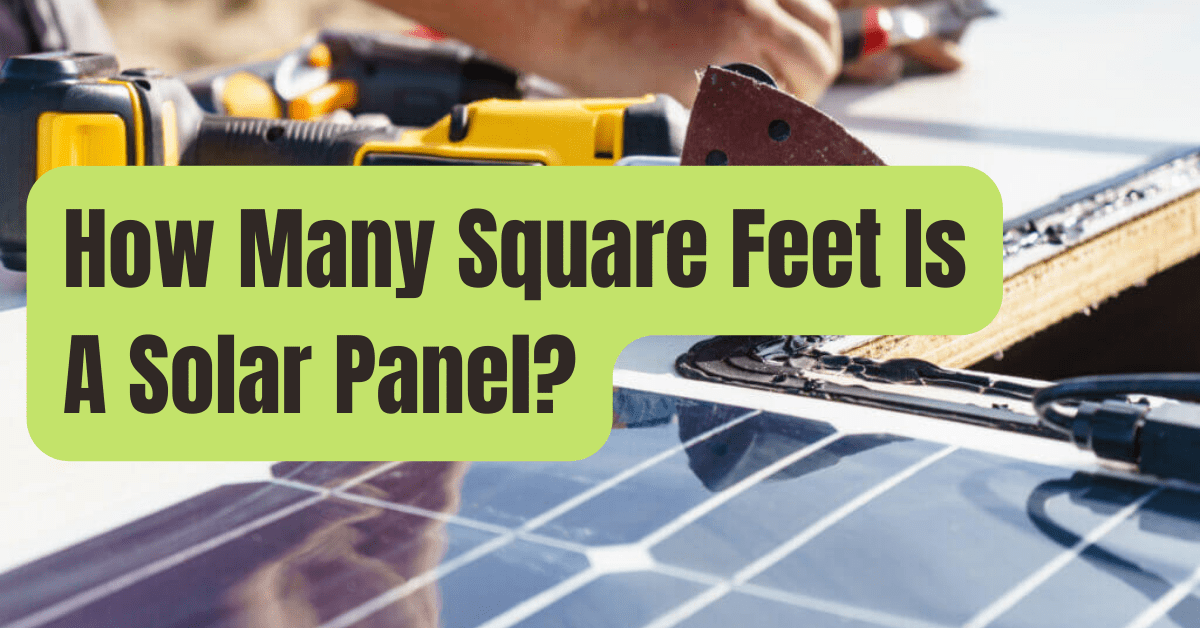In general, 28–32 solar panels are required to power a home.
This will pay the whole energy bill for a 2,500 square foot house.
The precise number of panels you’ll need will depend on the size of the house, where the panels are installed, where they are located, and how efficient the panels are.
The Environmental Impact Assessment conducted by the US government estimates that the typical American home consumes roughly 877 kWh of power per month, or about 10,600 kWh annually.
This number is an average and may change based on the size of the house and personal energy use.
What Impacts the Number of Solar Panels I Will Need?
The quantity of panels needed to power a house entirely with solar energy depends on a variety of variables, including but not limited to.
- Overall energy use
- The slope of your roof.
- The usual quantity of sunshine where you are
- Total power that your solar panels are capable of producing
You may check your energy bills and make a note of how many kWh you consume each month to figure out your total energy requirements.
The Southwest gets more sunshine than other parts of the nation, such as the Northeast, and southern-facing roofs often receive the most sunlight.
Working with a solar expert may help you identify solutions and estimate how many watts each panel should generate.
What Kind of Power Can a Solar Panel Generate?
The efficiency of solar panels has increased dramatically in recent years, giving rise to a number of consumer-grade panels.
The quantity of sunlight that your solar panels get, which in turn relies on the orientation of the panel and your location, determines the precise amount of electricity that they can generate.
A typical solar panel can generate around 250 watts of sunshine each hour.
Assuming your solar panels get at least 6 hours of sunshine each day, this translates to around 1.5 kWh of electricity each day, 45 kWh per month, and 540 kWh annually.
Once again, these numbers will vary depending on your location and how much sunshine your panel gets.
You would need at least 20 solar panels to meet your whole power demands if a single panel produced 45 kWh per month and the typical American house used 900 kWh per month.
Since it is doubtful that they would consistently get 6 hours of sunshine each day, you will really need more panels than 20.
Here are some numbers indicating the typical amount of solar panels required to power a 1,000 square foot, 1,500 square foot, 2,000 square foot, and 2,500 square foot house.
- 10–12 panels covering 1,000 square feet
- 16–18 panels covering 1,500 square feet
- 22–24 panels covering 2,000 square feet
- 28–32 panels covering 2,500 square feet
How Big of a Solar Array Do I Need?
Houses in brighter places need a smaller array than homes in areas that do not get as much sunshine, all other things being equal.
For instance, while California receives more sunlight than the Northeast, the typical size of a solar array in California is less than one in Massachusetts.
A typical domestic solar panel requires roughly 15 square feet of space.
You would need roughly 300 square feet of area for a typical 5 kWh setup (about 20 panels).
You would need roughly 600 square feet for a 10 kWh system and about 900 square feet for a 15 kWh system.
These estimates were performed on the assumption that your solar panels will be 16 percent efficient.
The average efficiency of household solar panels is between 16 and 20 percent.
You would need less room if your panels were more effective.
(Fun fact: a single panel solar cell’s potential maximum efficiency utilizing current technology is 33.7 percent.
The Shockley-Queisser limit is this value.
How to Determine the Number of Solar Panels Required to Power Your Home
In the end, hiring an expert and requesting a price is your best course of action.
However, some simple arithmetic can allow you to determine the amount of panels your property will need.
- Calculate your monthly energy use by using the average of the previous 12 electricity statements you have received.
- Calculate your daily kWh use by dividing your average monthly consumption by 30 (for example, 1,000 kWh/30 days is 33.3 kWh per day).
- Calculate how much direct sunshine your panels will get each day. A 250-watt panel needs at least 4-5 hours of direct sunlight each day, although this may be difficult to predict.
- Decide how much electricity you want solar energy to replace – Whether you want 100%, 75%, 50%, or 25% of your energy needs to be met by solar power, double your daily energy use by that number.
- Determine the number of panels you’ll need. You may roughly estimate how many panels you need to install to meet your energy demands by dividing the figure from step 4 by 250 (1 panel = 250 Watts).
Keep in mind that you’ll probably need more panels than this number, since they won’t catch sunshine every single day of the month.
FAQs
Can Solar Power Run a House by Itself?
Using the right configuration, it is undoubtedly feasible to power a home completely with solar energy.
To be able to completely disconnect from the grid, you’ll need a significant number of solar panels and solar batteries.
What Number of Solar Panels Do I Need For a Three Bedroom House?
For a typical 2,300 square foot, 3-bedroom home, you’ll need around 26 solar panels.
The precise figure may vary depending on the size of your house, how much energy you consume, and how many hours of sunshine you typically get.
Does AC Work with Solar Panels?
As solar panels only produce electricity while exposed to sunlight, running air conditioning on solar power requires installing solar batteries or switching to grid power at night.










